
Photography by Harry Wagner
Old man winter has arrived with a vengeance in most parts of the country. But that doesn’t mean that you have to store your 4×4 in the garage until spring. On the contrary, wheeling in the snow can be a whole lot of fun in everything from a stock truck to a fully built-to-the-hilt Wrangler. Snow often isn’t as hard on parts (or sheet metal) as the rocks can be. And there is a whole lot less clean up afterward when compared to the mud. That doesn’t mean you can hop in your rig and head to the hills, though. Taking the necessary precautions and being prepared can mean the difference between a memorable winter adventure or the second coming of the Donner Party. You and your vehicle need to be ready for the extra risks that wheeling in snow involves, whether on the trail or the road.
A thermos of soup, coffee, or tea can help warm you up on a cold day. Be mindful of your caffeine and alcohol intake, though. These substances can lower your body temperature. High-calorie energy bars and water are easy to carry, so bring more than you think you will need. Despite being in the cold, it is easy to get dehydrated, particularly if you spend a lot of time digging or winching.
The shovel is mightier than the sword. At least when it comes to getting unstuck! A dedicated snow shovel with a wide, square head moves the most snow with the least amount of shoveling. This is a lightweight, collapsible ski shovel. But a full-size snow shovel for clearing your driveway works just as well.
What To Wear
If you want to have a good time snow wheeling, you need to be prepared for the wet and cold. In Alaska, they say that cotton kills because it loses its insulating properties once it gets wet. Wool and synthetic materials do not suffer from this problem. Leave the hoodies and jeans at home in favor of waterproof jackets, stocking caps to keep your head warm, and insulated gloves. Dress in layers to quickly shed or retain heat. And focus on synthetic materials, such as inner layers that wick away moisture from your body. Combine those with outer layers that repel water and wind.
Spare clothes are never a bad idea as they do not take up much room or weigh very much. If you don’t need them, it is not a big deal. Footwear can be tricky because you want it to be warm and waterproof. But at the same time, you don’t want bulky boots that press on the gas and brake pedals at the same time.
No one plans to spend the night on the trail, but that doesn’t mean that it never happens. Having a good sleeping bag with you is cheap insurance. If you or your passengers get cold, the sleeping bag can be useful for warming up even if you are not sleeping. Just like with clothing, cotton and down sleeping bags lose their insulating properties when they are wet. You are better off with synthetic materials. A tarp or space blanket can be helpful as well to keep the sleeping bag dry.
When you feel resistance in the snow, your natural reaction may be to try to power forward. Often this results in digging holes and, if you spin too much, your tires can melt the top layer of snow. When this water re-freezes, it turns into ice and can halt you in your tracks. Instead, ease off the throttle. If necessary, back up about a foot before trying to continue forward.
Airing down your tires to increase the contact patch is the best thing you can do to improve your vehicle’s prowess in deep snow. We typically run single-digit air pressure on tires like these that have a lot of sidewall and are mounted on beadlock wheels. Airing down not only makes the tire wider but also lengthens the contact patch front-to-back for increased floatation.
What To Bring
You want to bring a strap, a shovel, and an air compressor at a minimum. Often a quick tug from a friend is all you need to get you moving again in the snow. You do go wheeling with a friend, right? We don’t recommend going snow wheeling alone. We also suggest telling a responsible party where you are going and when you plan to return. Doing so can make rescue much quicker if things get a little too spicy. Not only is it more fun to go wheeling with friends, but it is also much safer as well.
A kinetic strap, like a Bubba Rope, will stretch and is a better choice for recovery in the snow than a standard tow strap. Sturdy recovery points front and rear, and some D-rings are necessary to use your snatch strap properly. Don’t tie a strap around suspension or steering components, or you may end up with worse problems than just being stuck. Even when using a strap, a shovel can be helpful to dig out axles and knock down mounds of snow. It is better if your tires can climb smooth, gradual ramps in the snow rather than four icy wheel chalks.
It might seem counter-intuitive that you need a good cooling system in single-digit temperatures. Even without being stuck, snow provides a high amount of resistance that puts your engine and transmission under a tremendous load. If you have an automatic, run the biggest transmission cooler you can fit under your vehicle to keep it cool. Flex-a-lite and Be Cool have options to fit nearly any engine or transmission.
Recovery boards are useful tools that can help you get back on top of the snow if you break through the crust. Some work with a shovel beforehand will make the process easier. We recommend carrying four recovery boards, so you have one for each corner of the vehicle.
When The Snow Gets Deep
When the snow gets deep, things get really fun. You might spend all day wheeling, winching, and digging to only make it a few hundred yards down a road. The first thing you need to do is evaluate the snow. Eskimos have over 100 words for different types of snow. Some is heavy and easy to get on top. Other types of snow can be crusty and you will become hopelessly stuck if you break through. The snow can also change throughout the day as the temperature changes. You might have to crawl through the snow in the morning, but be able to power through it once it warms up.
We recommend airing down further for snow than you would for any other terrain. This lowers the contact pressure of your vehicle and lets the tire spread out on top of the snow. The goal is to float rather than sink.
Running single-digit air pressures greatly increases the likelihood of losing a tire off the bead. Even with beadlock rims, it is possible to unseat the inside bead. There are three basic varieties of air sources: electric, belt-driven, and compressed CO2. Belt driven compressors flow a lot of air, and with an auxiliary tank, they can easily reseat a tire. They generally require converting your A/C compressor and possibly giving up your air conditioning. CO2 tanks are another great choice as they are light, portable, and have plenty of power to reseat a tire on the rim. Note that CO2 will be less effective in extremely cold (below zero) conditions. Electric compressors can vary significantly in price and performance. High-quality compressors, like those available from ARB and Viair, can easily reseat a bead or air up tires and are impervious to temperature changes.
Not planning to spend the night out on the trail? The best way to prevent surprises is to be ready for any situation. Once stuffed in its sack, a sleeping bag does not take up much space and can keep you warm day or night. A poncho or space blanket can also keep you dry, which helps keep you warm. They are useful to wear, as a ground cloth, or under your vehicle to wrench on it. Staying dry is the key to staying warm.
Wheeling in the snow at night adds an entirely new dimension to an already dangerous hobby. Temperatures are lower at night, and it is easier to get disoriented. These are issues that can be overcome, but you need to be aware of them and adequately prepared with the right equipment. And whatever you do, don’t go alone.
Icy Roads
The best combination for icy roads and shallow snow is the complete opposite of what you would want for deep snow. Rather than trying to float on top of the snow with the lowest possible contact pressure, you want to cut through the snow and ice to prevent sliding. Narrow tires with lots of siping (and even studs) are best for icy roads to maintain traction. Sipes are little slits in the tire lugs that allow water a place to escape and prevent hydroplaning and sliding. All-terrain tires work better on icy and snow paved roads than mud-terrain tires.
We often see more 4×4 trucks off the side of the road than Subarus. That is because these trucks are typically driving in 2WD with no weight over the rear axle. Driving in high range is safe up to freeway speeds as long as you are on low traction surfaces like snow and ice. Adding sandbags or other weight over the rear axle will help with traction, but they won’t help you stop any faster. Open differentials or selectable lockers work better on ice than automatic lockers or spools. They will allow one tire to spin and the other to act as a rudder and keep the vehicle stable.
Always leave plenty of distance between you and the vehicle in front of you on ice to give yourself plenty of room to react. You want to make small inputs to the throttle, brakes, and steering to ensure that you don’t lose control when traction is limited.
If You Only Remember One Thing
If you only remember one thing before you go snow wheeling, it is to plan for the worst. There is a limited amount of daylight in the winter, and when temperatures drop, your trip can turn deadly if you are not prepared. While it is always easy to get caught up in the moment when you are out on the trail, use good judgment. Don’t overestimate what you and your vehicle are capable of and how long it will take you to complete your journey safely. Take into account things like getting stuck or debeading a tire, which are both very common in the snow. Adversity is part of the appeal of getting away from civilization. It doesn’t have to be insurmountable as long as you are prepared.




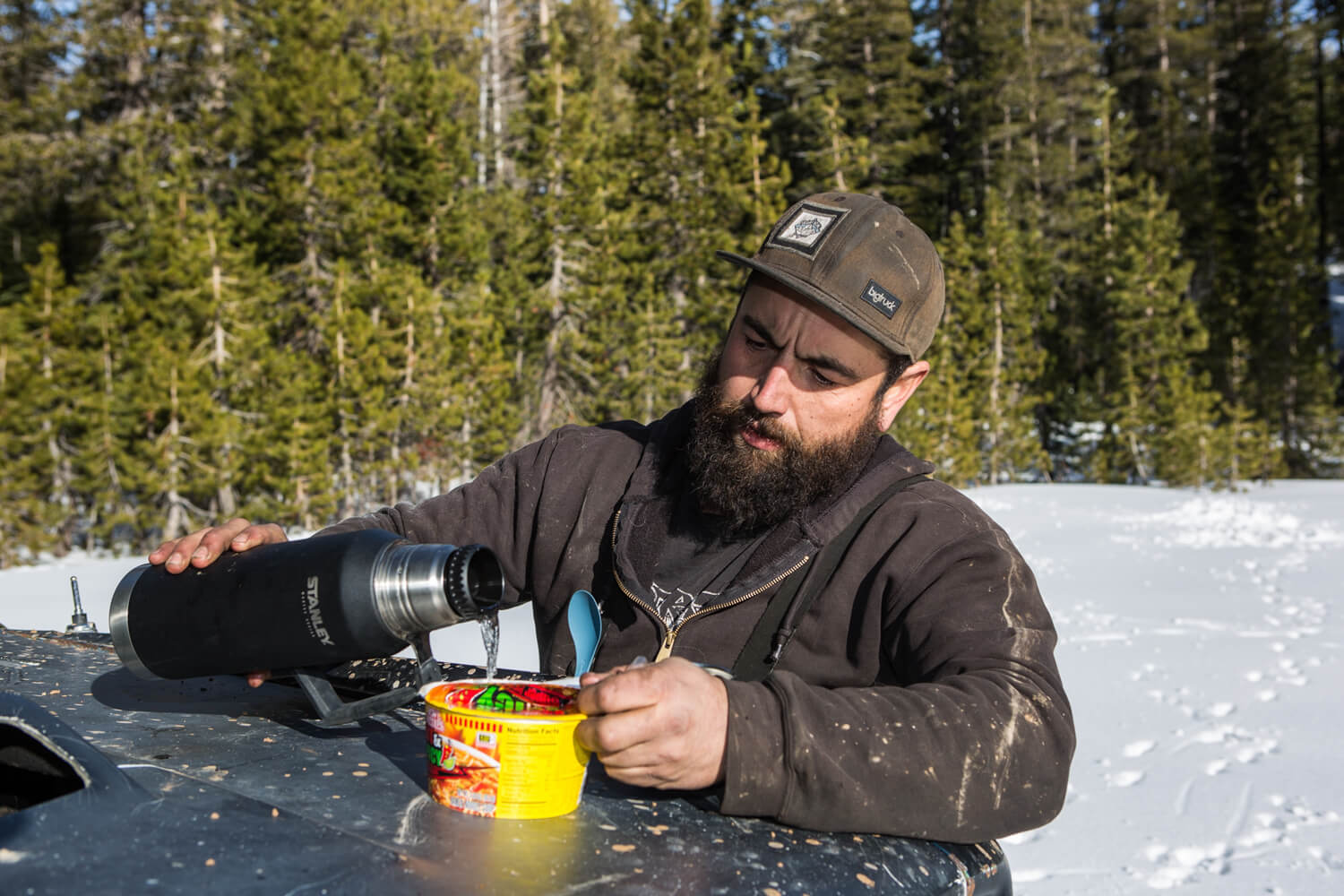
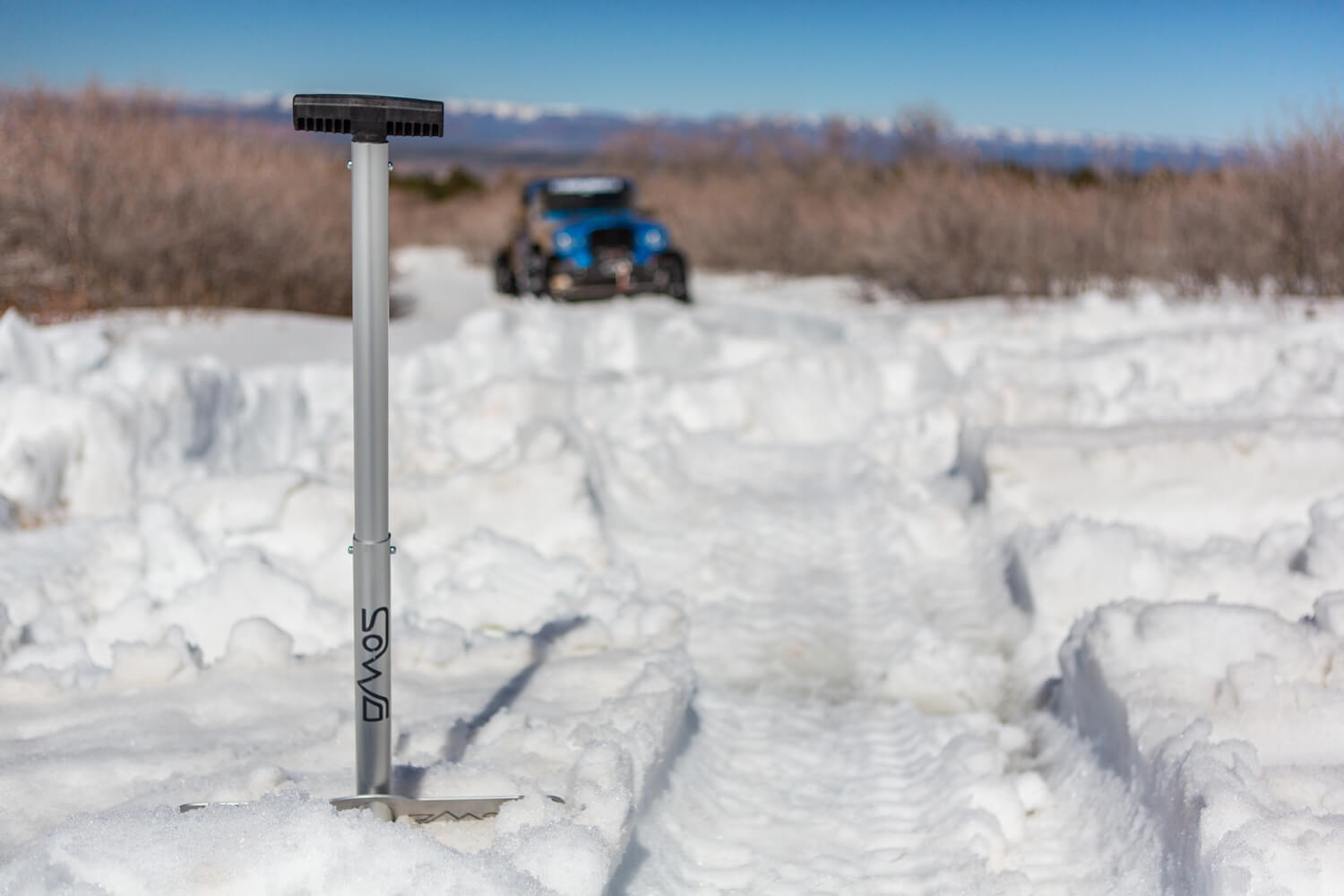

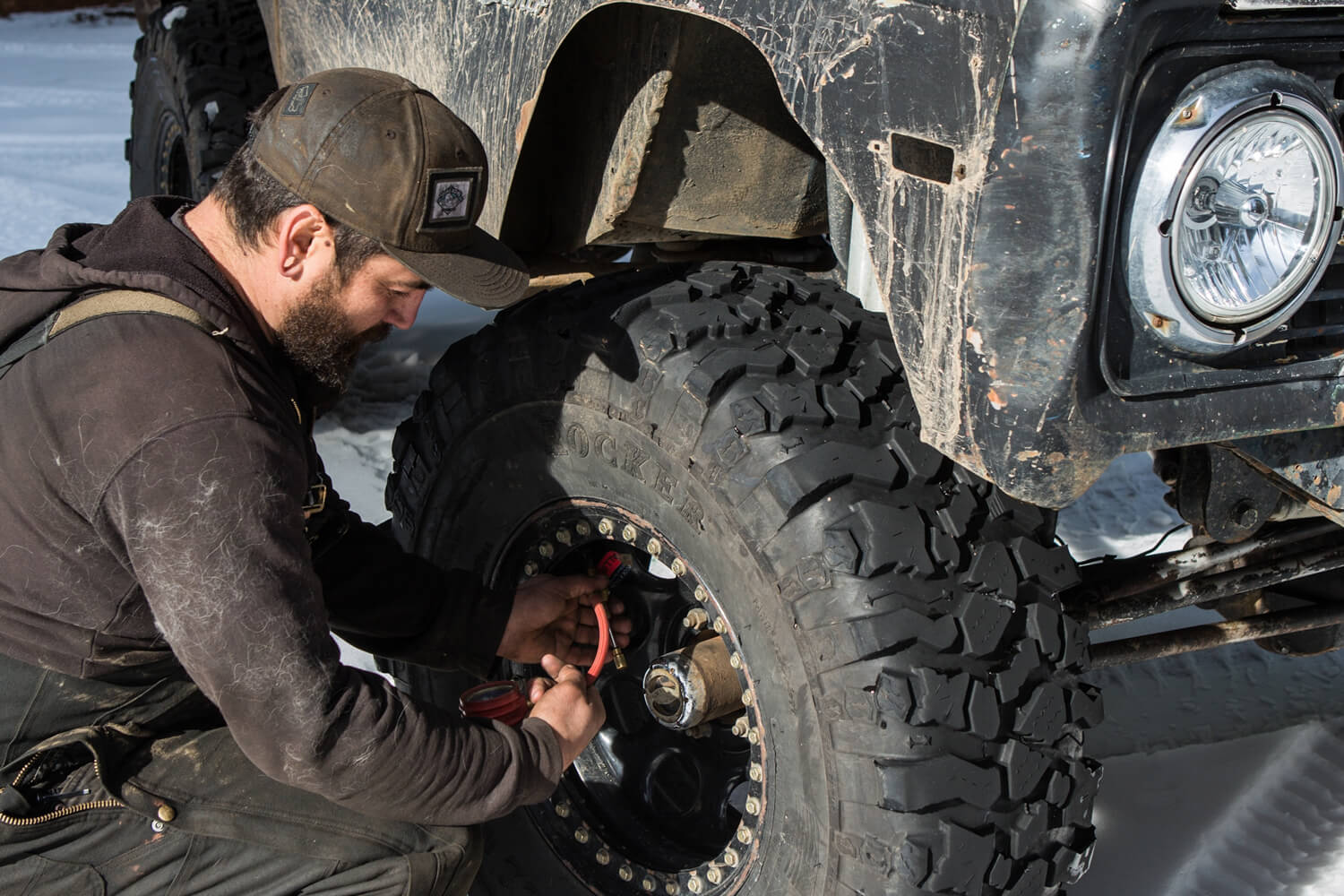
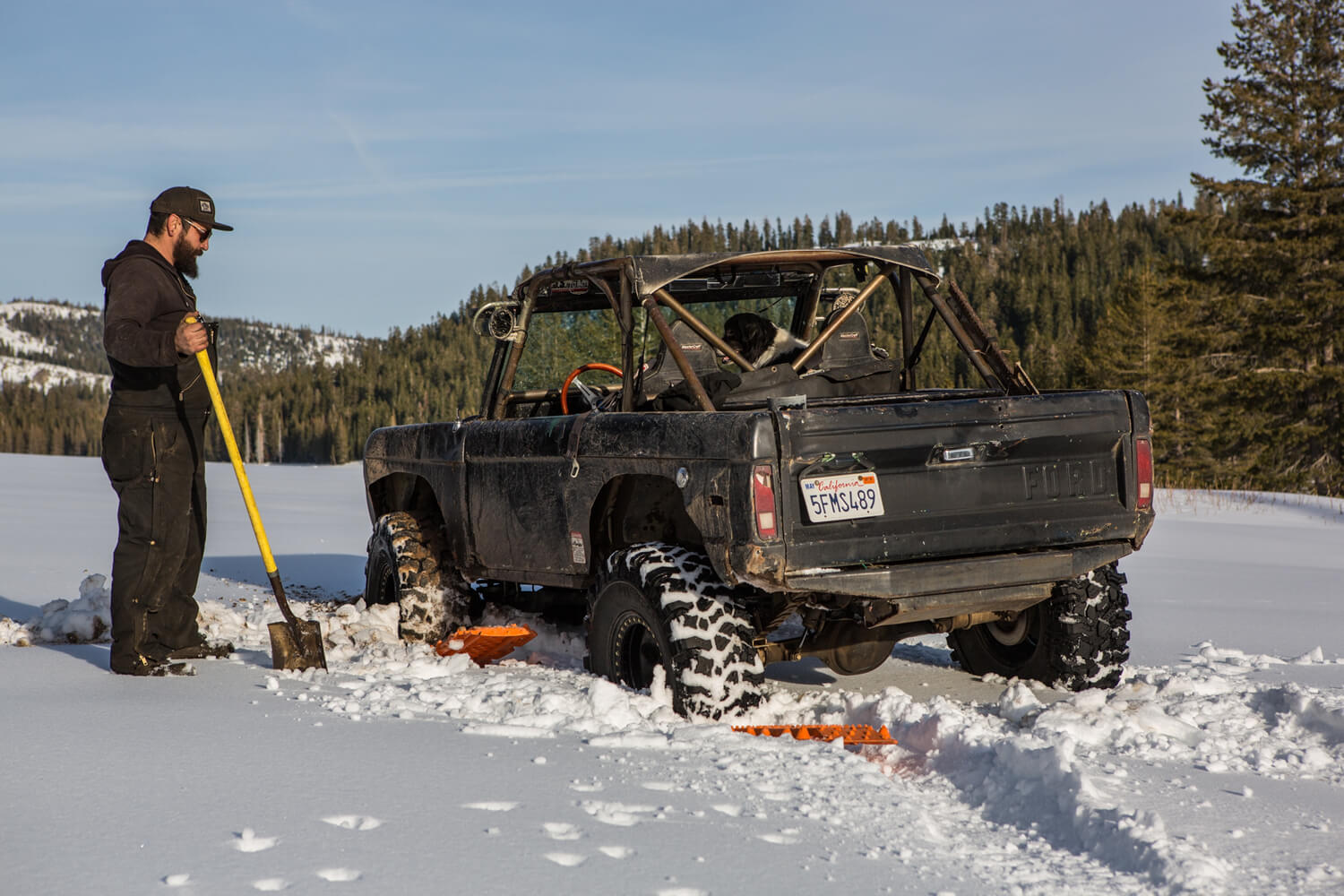
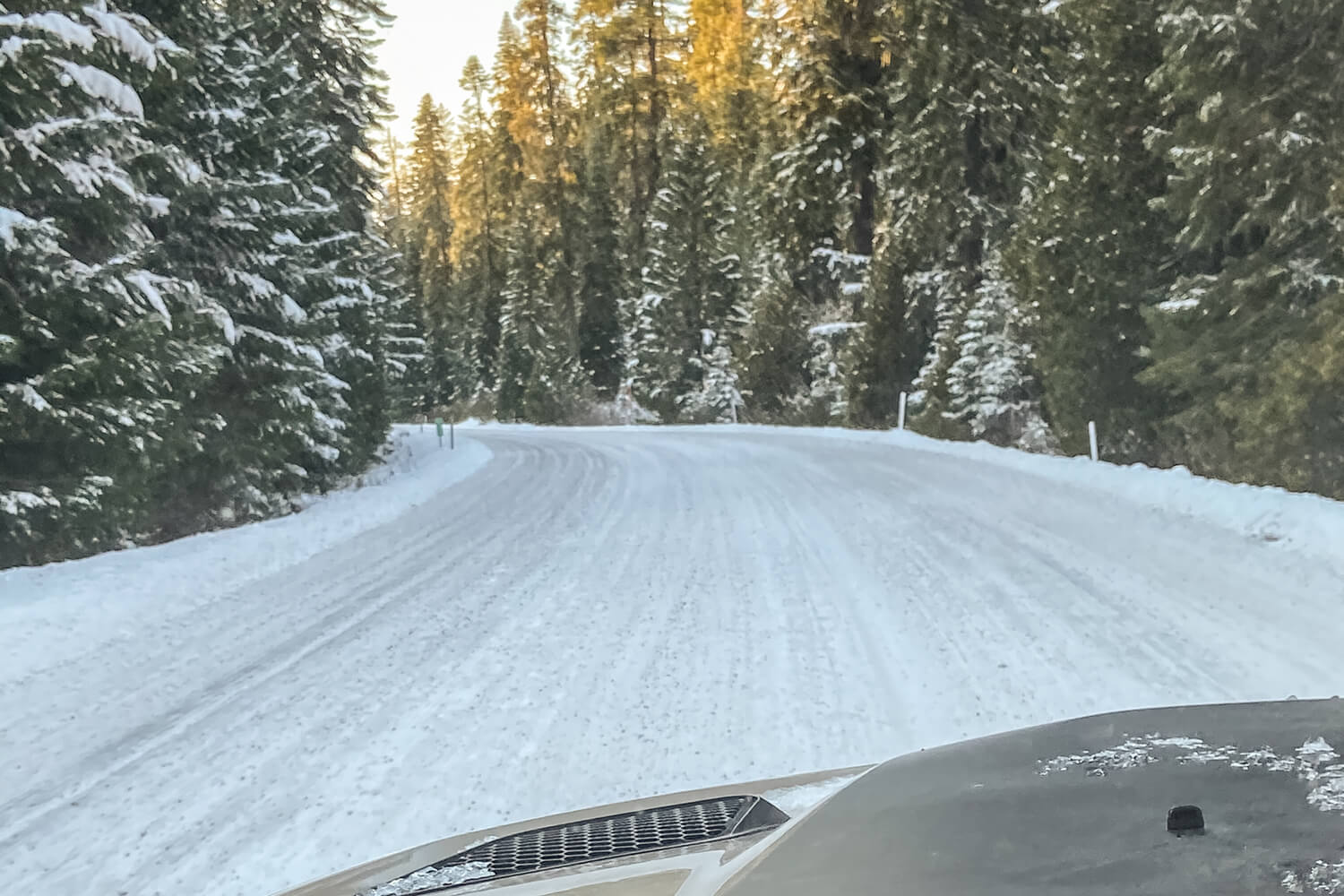
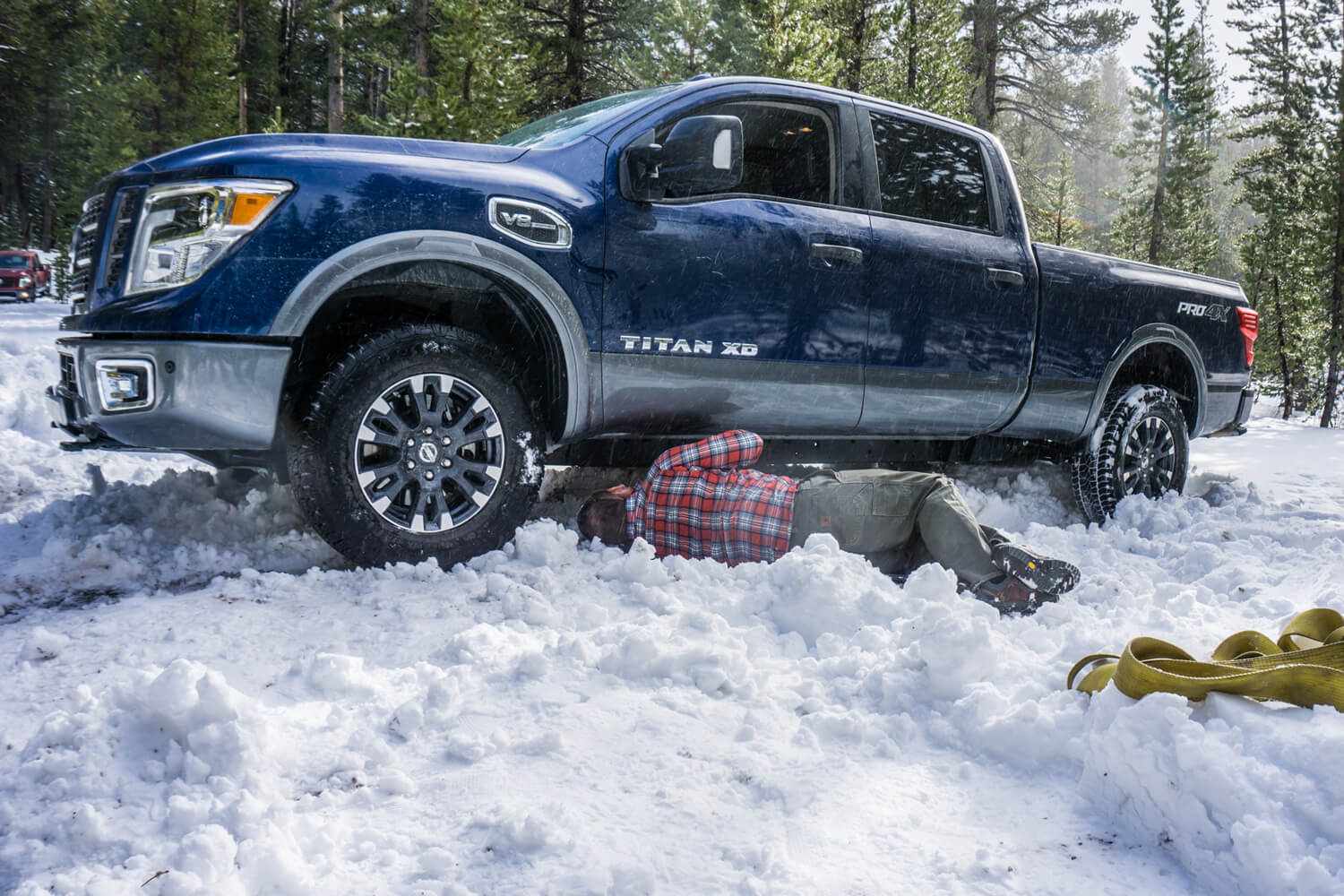
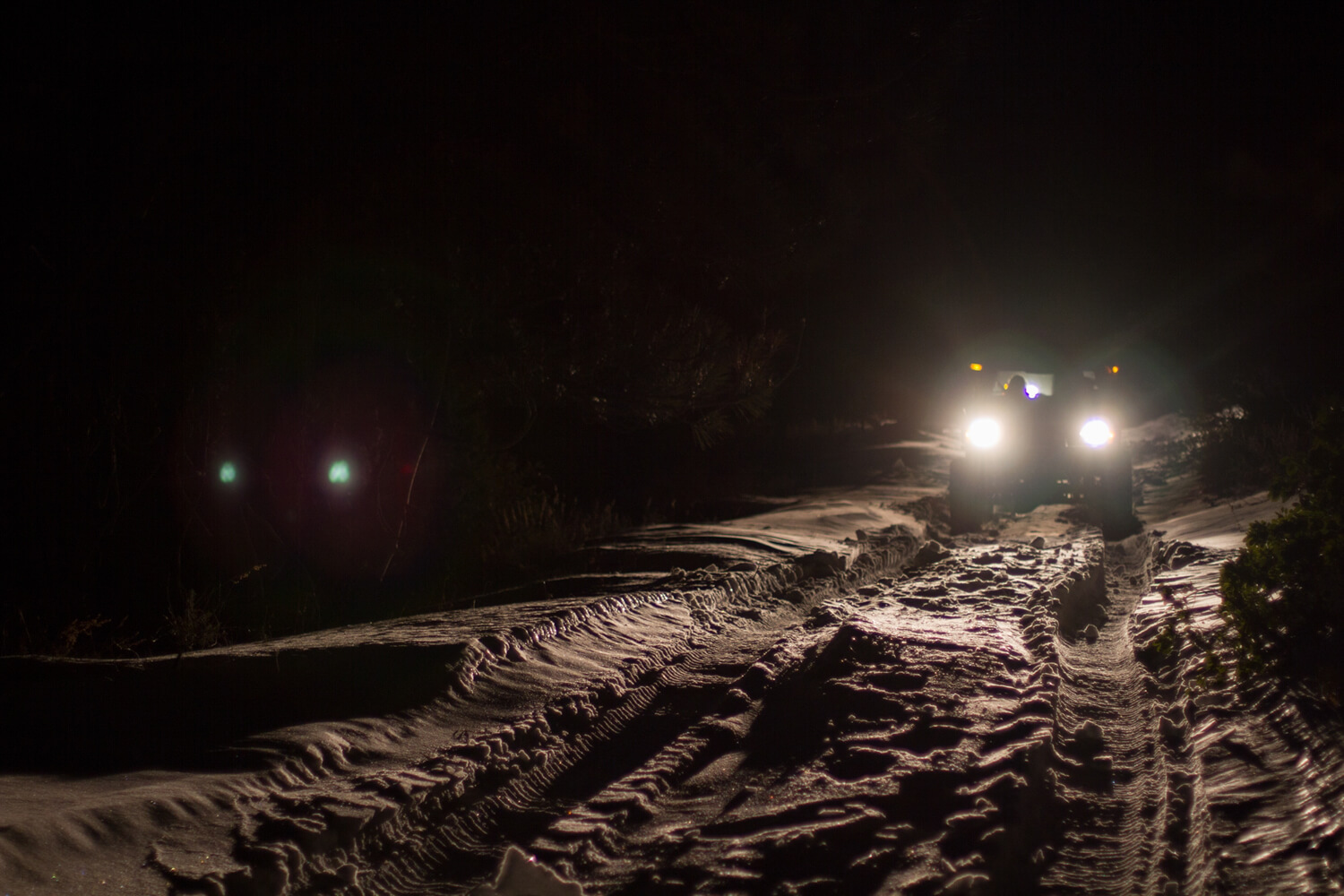


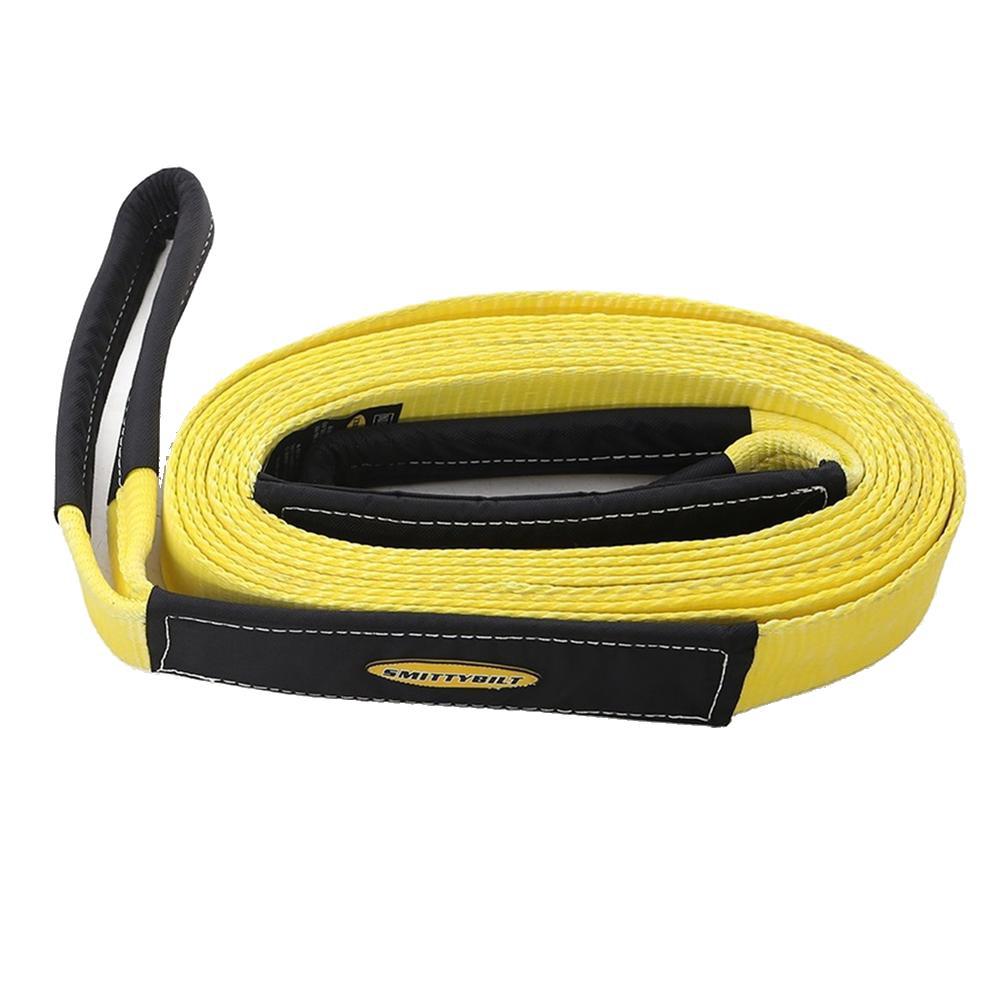
2